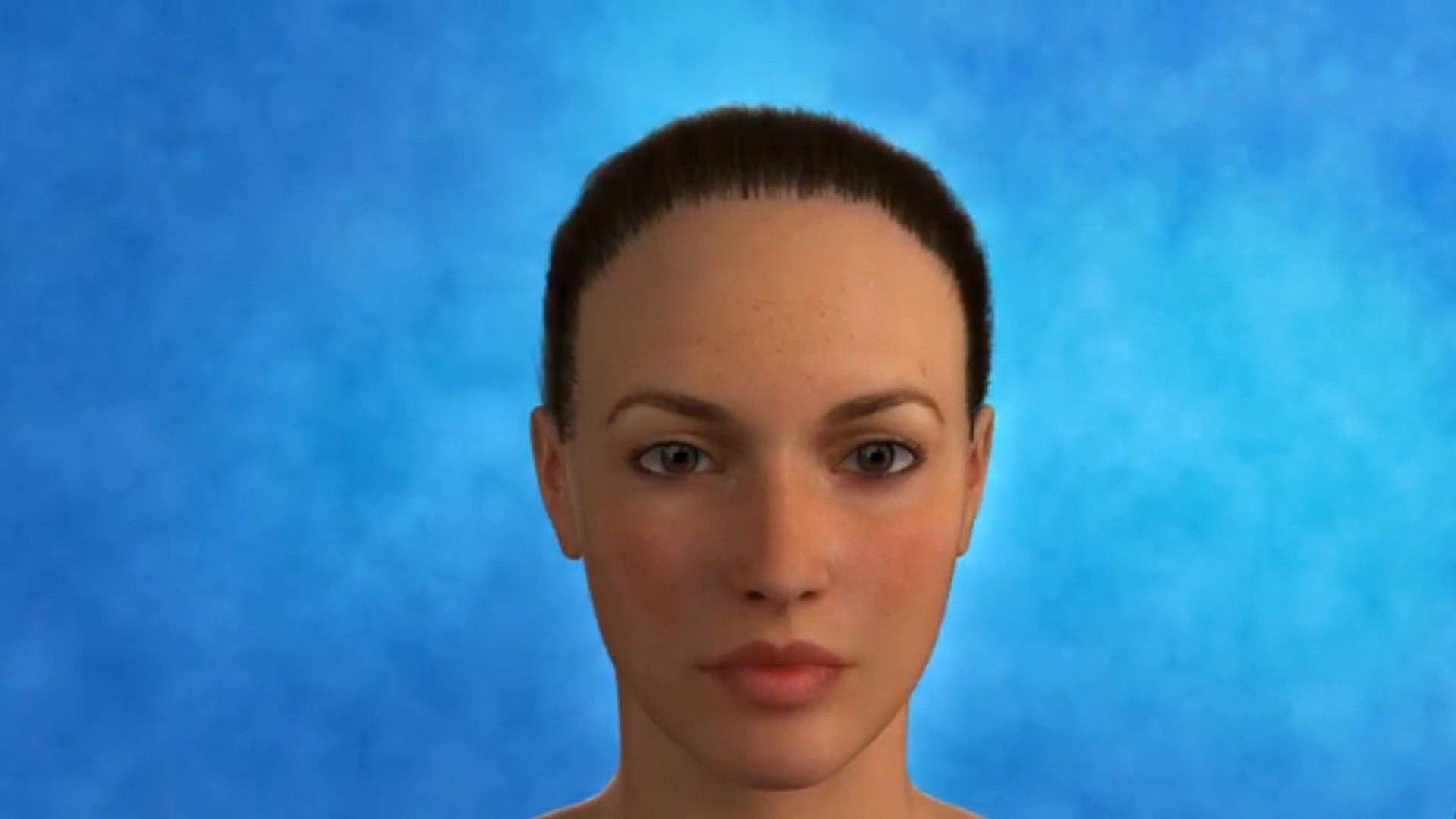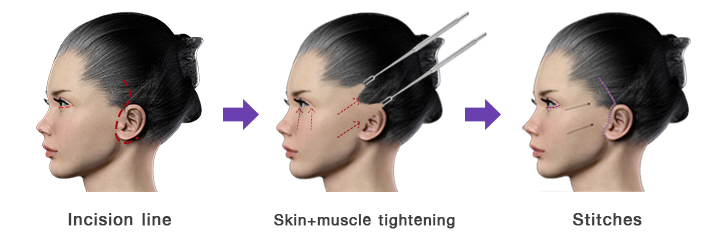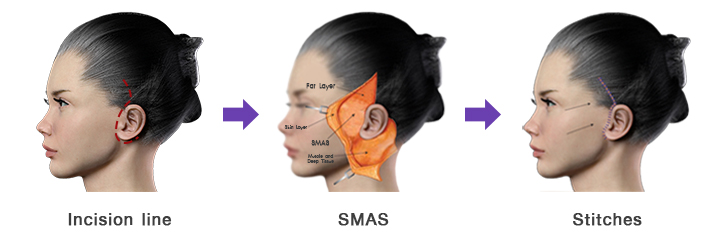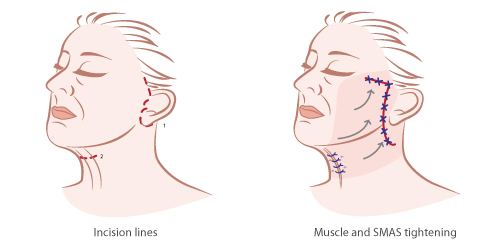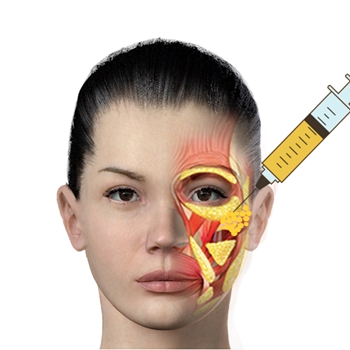
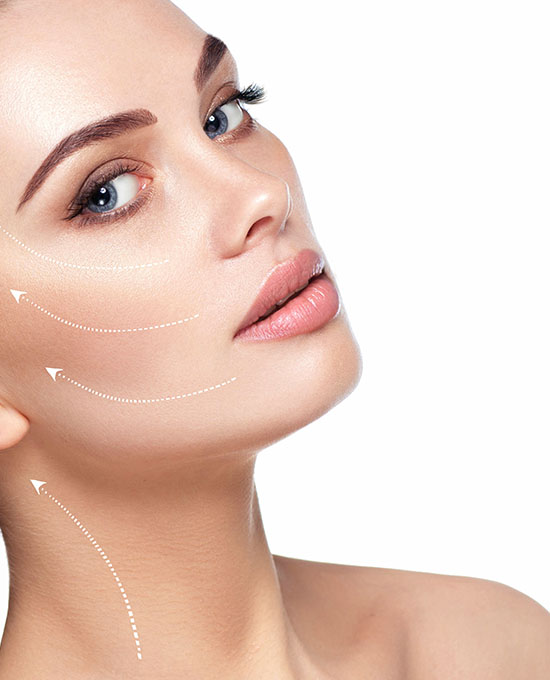

Face Lift in Turkey (Rhytidectomy)
No matter which plastic surgery operation it is; the candidates mainly seek for safety and good results at reasonable prices. With their extensive experience, plastic surgeons offer striking results for facelift in Turkey. As long as the surgeon knows what he or she is doing, and the surgery is carried out under sufficient conditions; facelift procedure in Istanbul is completely safe for anyone without a serious underlying disease. Prior to a facelift in Turkey, your surgeon takes your medical history, listens to your expectations, and explains all the details of the facelift surgery.
Which face lift type and technique is suitable for you is decided by your doctor based on your face needs, skin condition, aging and sagging level of your face age, gender.
Before your face lift surgery in Turkey, you are given local or general anaesthesia. Your professional doctor makes the incision differing according to your face lift type. Your skin and face tissues deep under your skin are tightened, smoothing the related face part secured in their new position. Then your doctor closes the incisions with stitches trying his/her best to minimize the scar visibility.
Facelift surgeries may be combined with each other depending on the cases and they may take up to 3-6 hours. Besides, it is also possible to have all these opportunities at a reasonable facelift cost Turkey.
Face Lift Surgery Animation
GET QUOTE IN 3 MINUTES
You can get a free analysis in under 3 minutes with our online assistant
Types Of Face Lift
Mini- facelift / Mid facelift
This procedure involves two incisions; the first one is a simple skin incision at the temporal hairline, down to the front of the ears, and ends at the earlobe. It is a standard facelift procedure that is still in use today. This operation tightens excess skin and relies entirely on skin tension to shift the underlying facial soft tissue. The second incision is near the lower eyelash. This area for lifting and tightening of cheek muscle, the excess skin will reduce to balance. This procedure is suitable for patients who have excess skin and minimal ptosis of deep soft skin.
This procedure takes around 2 hours under sedation or general anesthesia.
Full Facelift with SMAS
Our plastic surgeons perform the subcutaneous Facelift with separate SMAS Flap and SMAS-ectomy. The incision starts from the temporal hairline, down to the front of the ears, and ends behind the ears. Then the SMAS will be pulled upward and backward as tightly as possible. Underlying muscle might tighten, subcutaneous soft tissue and skin will move following the SMAS flap, and then resected to remove the excess skin. This facelift surgery is a more effective technique, and the results are longer lasting.
This procedure is suitable for the patients who have a lot of excesses and sagging skin, facial muscle ptosis, to remove and restore a smoother, firmer and more youthful appearance to their face
This procedure takes around 3-4 hours under sedation or general anesthesia.
Neck Lift / Neck Tuck
This procedure helps someone who has a thick, wrinkled, or sagging neck. The surgeons will perform one or both methods together. Neck tuck is a procedure that the surgeon makes a small incision under the chin-neck line, carefully lift and tighten loose neck muscles (Platysmaplasty). An incision of a neck lift is behind each ear, may also make a longer incision to stretch the neck muscle by SMAS. And underlying tissues and remove excess, sagging skin to restore a smoother, firmer, and more youthful appearance to the neck. This procedure usually performed with a full facelift.
This procedure takes around 2-4 hours under sedation or general anesthesia.
Forehead lift/ Browlift
A brow lift is the repositioning of an eyebrow to achieve a more youthful appearance. The incision scar is behind the hairline by 1-2 cm. There are three types of brow lift as follows:
- An endoscopic brow lift, which results in a minimal scar
- A temporal or limited brow lift, where incisions are at the temporal area both right and left
- The classic brow lift, where a long incision is made horizontal behind the hairline.
Facial restoration with fat transfer.
Fat transfer as a micrograft or nano-graft is performed to support particular areas that need contouring and fulfilling. This procedure is suitable for patients who have a slimmer face and loose fat, and have undergone a facelift surgery with unsatisfactory results due to the lack of volume. Some patients may need more procedures to achieve a desired youthful look. Experienced surgeons can recommend best options, though the final decision remains at the patient’s discretion.
This procedure takes around 1-2 hours under sedation or general anesthesia.
Testimonial
Facelift Post-Op Instructions
Frequently Asked Questions
What is a Facelift?
Facelift, or rhytidectomy, is a surgical procedure to improve visible signs of aging on the face and neck. As individuals age, the skin and muscles of the face region begin to lose tone. The facelift cannot stop the process of aging. It can improve the most visible signs of aging by tightening deeper structures, redraping the skin of face and neck, and removing selected areas of fat. A facelift can be performed alone, or in conjunction with other procedures, such as a brow lift, liposuction, eyelid surgery, or nasal surgery.
How do I known if I’m a good candidate for a Facelift?
Facelift surgery is individualized for each patient. The best candidates for facelift surgery have a face and neck line beginning to sag, but whose skin has elasticity and whose bone structure is well defined.
What type of anesthesia will I receive for my Facelift?
Facelifts are usually performed with general anesthesia.
How are Facelifts performed?
For a traditional facelift, an incision is made behind and slightly in front of ears and the skin of the face is lifted from the underlying tissues and muscle. The facial skin is then tightened and the excess removed before the incisions are closed. A bandage will be applied to the face at the completion of surgery.
How long is the surgery for a Facelift?
Surgery is usually preformed as an outpatient or overnight stay and usually takes about two to three hours.
Will I have scars after my Facelift?
Most women can use their hair to hide the scars. For women with short hair, it might be a good idea to allow your hair to grow slightly longer while the scars are still fresh. You also can meet with our esthetician to discuss special makeup that can camouflage the scars.
How much pain can I expect after my Facelift?
You may experience some temporary discomfort, particularly around the incisions, but this can be relieved with prescription medication.
What should I expect of the recovery after my Facelift?
You can expect some bruising and swelling after your facelift. Most of the swelling should fade within about a week, while the bruising may take two to three weeks to clear up. You may experience some headaches and numbness, itching and hair loss at the incision. Bandages applied after surgery are usually removed within a couple of days, and stitches may be removed within one to two weeks.
How much time should I plan to take off from work after my Facelift?
Normal activities, including work, can usually be resumed within 2 weeks.
How soon after my Facelift can I exercise?
Any strenuous exercise will need to be postponed for at least 4-6 weeks, and sun exposure will need to be limited for several months.
What are the risks and complications involved with having a Facelift?
As with any surgery, there are risks involved. Smokers are required to refrain from smoking, before and after the procedure, for a minimum two months, to reduce the likelihood of complications. Some possible risks are hair loss, nerve damage and delayed wound healing. Pixl Clinic will fully present the risks and complications to you during your consultation.


